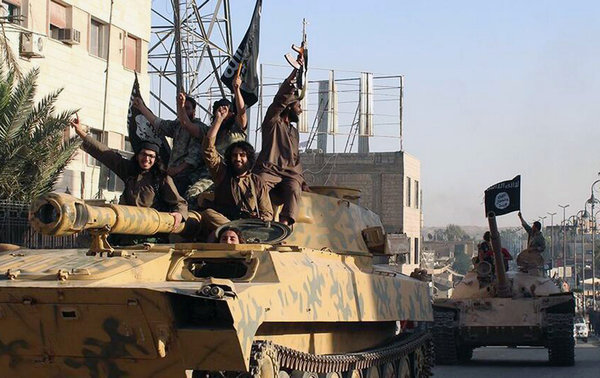By MICHAEL R. GORDON
November 16, 2015
ISTANBUL - Intensifying pressure on the Islamic State, United States warplanes for the first time attacked hundreds of trucks on Monday that the extremist group has been using to smuggle the crude oil it has been producing in Syria, American officials said.
According to an initial assessment, 116 trucks were destroyed in the attack, which took place near Deir al-Zour, an area in eastern Syria that is controlled by the Islamic State.
The airstrikes were carried out by four A-10 attack planes and two AC-130 gunships based in Turkey.
Plans for the strike were developed well before the terrorist attacks in and around Paris o n Friday, officials familiar with the operation said, part of a broader operation to disrupt the ability of the Islamic State, also known as ISIS or ISIL, to generate revenue to support its military operations and govern its territory.
Graphic | ISIS Is Likely Responsible for Nearly 1,000 Civilian Deaths Outside Iraq and Syria At least a dozen countries have had attacks since the Islamic State, or ISIS, began to pursue a global strategy in the summer of 2014.
American officials have long been frustrated by the ability of the Islamic State to generate tens of million of dollars a month by producing and exporting oil.
To disrupt that revenue source, American officials said last week that the United States had sharply stepped up its airstrikes against infrastructure that allows the Islamic State to pump oil in Syria.
Until Monday, the United States refrained from striking the fleet used to transport oil, believed to include more than 1,000 tanker trucks, because of concerns about causing civilian casualties. As a result, the Islamic State's distribution system for exporting oil had remained largely intact.
The new campaign is called Tidal Wave II. It is named after the World War II effort to counter Nazi Germany by striking Romania's oil industry. Lt. Gen. Sean B. MacFarland, who in September assumed command of the international coalition's campaign in Iraq and Syria, suggested the name.
 To reduce the risk of harming civilians, two F-15 warplanes dropped leaflets about an hour before the attack warning drivers to abandon their vehicles, and strafing runs were conducted to reinforce the message.
To reduce the risk of harming civilians, two F-15 warplanes dropped leaflets about an hour before the attack warning drivers to abandon their vehicles, and strafing runs were conducted to reinforce the message.
The area where the trucks assemble in Syria has been closely monitored by reconnaissance drones. As many as 1,000 trucks have been observed there, waiting to receive their cargo of illicit oil.
On Monday, 295 trucks were in the area, and more than a third of them were destroyed, United States officials said. The A-10s dropped two dozen 500-pound bombs and conducted strafing runs with 30-millimeter Gatling guns. The AC-130s attacked with 30-millimeter Gatling guns and 105-millimeter cannons.
The pilots saw several drivers running to a nearby tent and did not attack them, an American official said, and there were no immediate reports of civilian casualties.
Col. Steven H. Warren, the American-led coalition's spokesman in Baghdad, confirmed that A-10s and AC-130s had been used in the attack and that 116 tanker trucks had been destroyed.
"This part of Tidal Wave II is designed to attack the distribution component of ISIL's oil smuggling operation and degrade their capacity to fund their military operations," Colonel Warren said.
The strike came just days after Kurdish and Yazidi fighters, backed by American airstrikes, cut an important road, Highway 47, that the Islamic State has used to move supplies and fighters between Syria and Mosul, Iraq 's second-largest city, which was captured by the militant group last year.
That road was cut on Thursday, and Kurdish and Yazidi fighters retook the Iraqi city of Sinjar the next day.
The American operation against the oil trucks followed a French raid on Sunday on two Islamic State targets in Raqqa, Syria, which allied officials identified as a headquarters building and a training camp.
More than 20 bombs were dropped by French planes in the attack, an allied official said. It is not clear how much damage was caused, and no secondary explosions were observed.